Over recent years, decentralized applications (dApps) have quickly gained attention among tech and finance professionals. Operating on blockchain networks, these digital apps offer several benefits, such as improved privacy protection, resistance against censorship, and peer-to-peer interactions, yet fully comprehending them requires diving deeper into dApp data.
What Are dApps?
Decentralized Applications, commonly called dApps, mark a significant breakthrough in app technology by operating on blockchain platforms. Thanks to their distributed management approach, dApps distinguish themselves by offering superior security, transparency, and user control.
DApps are adaptable applications designed to fulfill many different purposes. Some focus on streamlining financial transactions – for instance, DeFi platforms, which facilitate direct money transfers without banks – while others explore areas like gaming, logistics, electronic voting, or digital art creation.
dApp Data Types
To understand the decentralized app ecosystem, it’s necessary to examine dApp data. dApp data refers to information created and stored by decentralized apps on blockchain networks that includes user interactions, transactions, contract execution details, and more.
dApp data can be categorized into several types, depending on the specific dApp’s functionality and purpose. Some common types of dApp data include:
User Data
This includes information related to user identities, account balances, transaction histories, and preferences. User data is often stored on the blockchain in a pseudonymous manner, ensuring privacy while maintaining transparency.
Smart Contract Data
Smart contracts are self-executing contracts with the terms of the agreement directly written into code. Smart contract data refers to the state and execution details of these contracts, including inputs, outputs, and contract-specific variables.
Transaction Data
Every transaction within a dApp generates transaction data, which includes the sender and recipient addresses, the amount transferred, and any additional parameters specific to the transaction.
Event Logs
DApps often emit event logs during specific actions or events. These logs capture relevant information about the event, allowing users and developers to track and respond to specific occurrences within the dApp.
Metadata
DApp metadata refers to additional information associated with dApp elements, such as user profiles, content descriptions, or transaction tags. Metadata can enhance the user experience and provide context to the dApp data.
Analyzing dApp Data
Examining dApp data can yield valuable insight into user behavior, performance metrics, and overall network health. Data analytics techniques can enable developers, researchers, and stakeholders to understand the dApp ecosystem better, identify trends, and make data-driven decisions.
User Behavior
Analyzing user behavior within a dApp can reveal patterns, preferences, and potential areas for improvement. By monitoring user interactions, developers can optimize user experiences through usability improvements and increasing engagement levels – with metrics such as retention rates, session durations, and click-through rates serving as useful metrics in measuring this aspect of user behavior analysis.
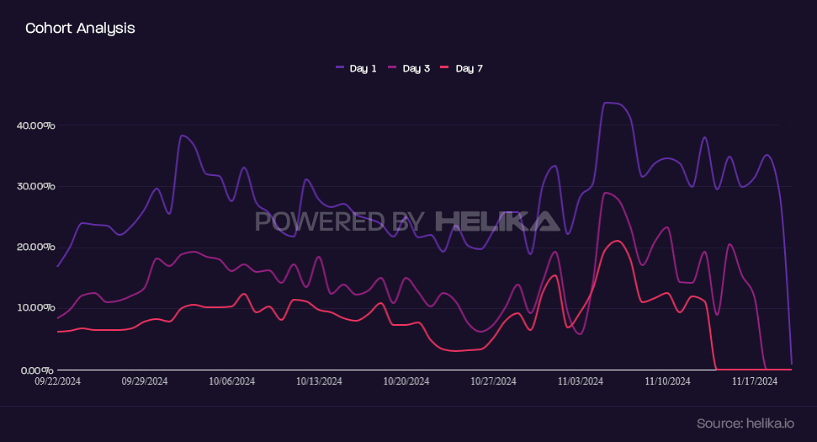
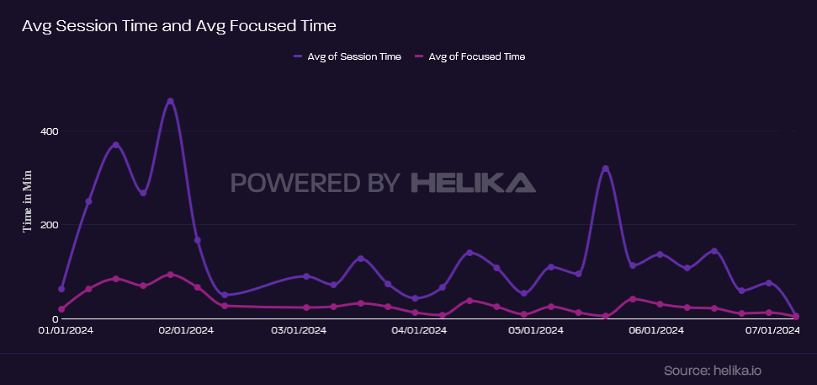
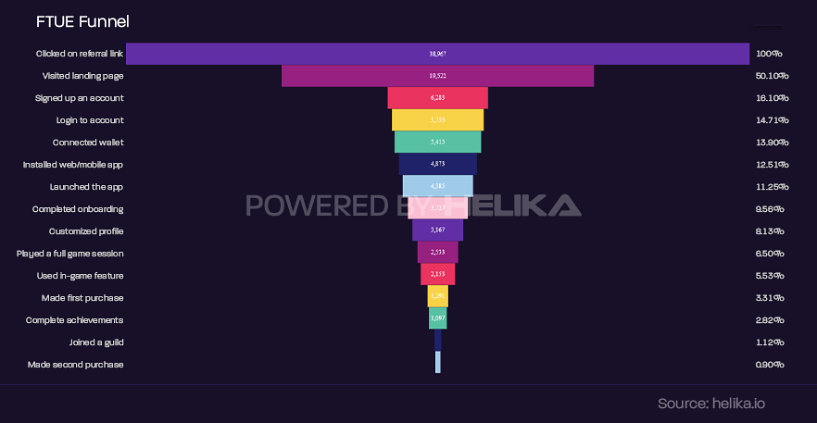
Performance Metrics
Measuring and analyzing performance metrics are integral to maintaining a thriving dApp ecosystem. Key Performance Indicators (KPIs), like transaction throughput, block confirmation times, and gas fees, can provide important insight into bottlenecks, scalability issues, and network congestion and enable developers to optimize their applications for improved user satisfaction and performance.
Network Health Monitoring
dApps running on blockchain networks require frequent network health checks to operate effectively and seamlessly. Monitoring parameters like block propagation times, consensus mechanisms, network congestion rates, and congestion severity is crucial to detect vulnerabilities, security threats, or potential areas for optimization as quickly as possible.
Challenges in Analyzing dApp Data
While dApp data analysis offers valuable insights, several challenges can be associated with its implementation. Some examples include:
Data Scalability
As blockchain networks expand, so does their volume of dApp data. Handling such an abundance can be resource-intensive and demands efficient storage and analysis solutions for processing such large volumes of information.
Data Privacy
Although blockchain provides transparency, protecting user privacy remains of equal importance. Finding an equitable balance between transparency and privacy when analyzing dApp data presents challenges, as sensitive user information must remain protected at all costs.
Data Interoperability
dApps may utilize different blockchain networks and data formats, making data interoperability an obstacle. Establishing standards and protocols to facilitate smooth analysis.
Data Reliability
Ensuring the accuracy and integrity of dApp data can be a formidable task. Blockchain networks rely on consensus mechanisms but are susceptible to potential manipulation or attacks on data integrity. Therefore, robust validation mechanisms must be implemented to keep its integrity.
The Future of dApp Data Analysis
As the adoption of dApps continues to grow, the importance of analyzing dApp data will only increase. Advancements in data analytics, artificial intelligence, and machine learning will enable more sophisticated analysis techniques, providing deeper insights into user behavior, network performance, and ecosystem trends.
Collaborative efforts between developers, researchers, and data scientists will drive the standardization of data formats, privacy-preserving techniques, and interoperability protocols. These advancements will unlock the full potential of dApp data analysis and contribute to the continued growth and innovation of the decentralized app ecosystem.
dApp data analysis is vital in understanding and optimizing the decentralized app ecosystem. By analyzing user behavior, performance metrics, and network health, stakeholders can make data-driven decisions, enhance user experiences, and drive innovation. Utilizing a cutting-edge web3 analytics platform, such as Helika, can streamline data interpretation and facilitate actionable insights.
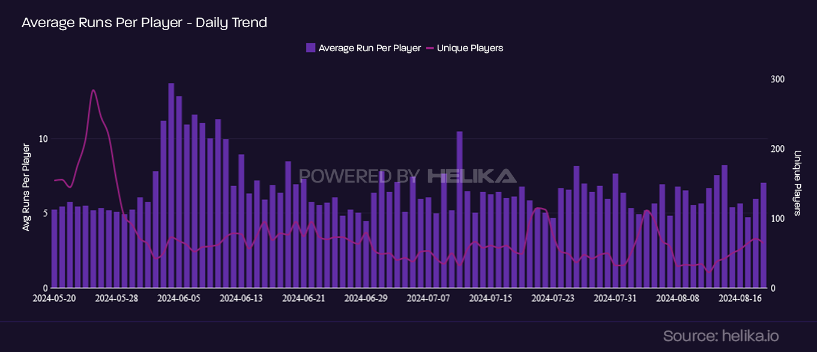

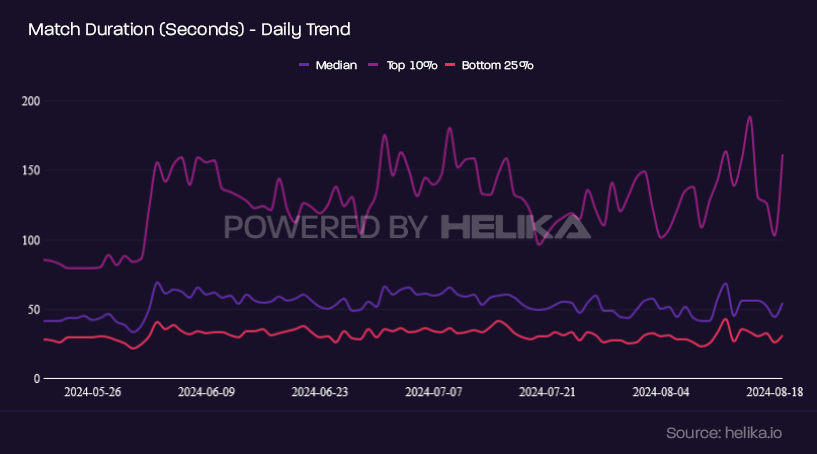
The Power of Helika for Data Interpretation
Helika revolutionizes how stakeholders engage with dApp data, offering advanced features tailored to unravel the complexities of decentralized networks. Through its intuitive interface and sophisticated algorithms, Helika empowers users to delve deeper into their data, uncovering hidden patterns and trends that might go unnoticed. Whether it’s analyzing user interactions, evaluating performance metrics, or monitoring network activity, Helika provides a comprehensive suite of tools designed to extract valuable insights at every turn.
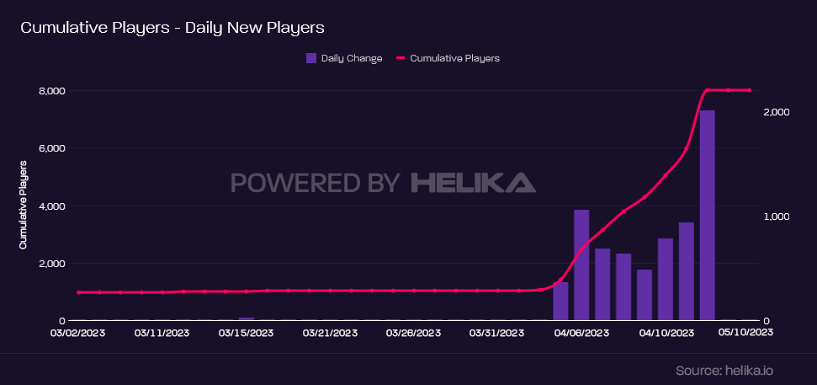
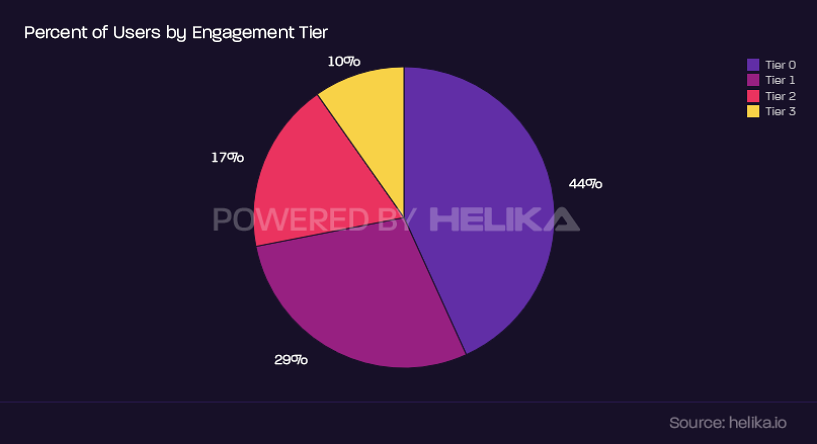
Ready to unlock the full potential of your dApp data? Schedule a consultation with one of our specialists today and discover how Helika can propel your business to new heights. Don’t just analyze data – interpret it, harness it, and transform it into actionable insights with Helika.
Ready to elevate your dApp analytics game? Connect with a specialist now.
Over recent years, decentralized applications (dApps) have quickly gained attention among tech and finance professionals. Operating on blockchain networks, these digital apps offer several benefits, such as improved privacy protection, resistance against censorship, and peer-to-peer interactions, yet fully comprehending them requires diving deeper into dApp data.
What Are dApps?
Decentralized Applications, commonly called dApps, mark a significant breakthrough in app technology by operating on blockchain platforms. Thanks to their distributed management approach, dApps distinguish themselves by offering superior security, transparency, and user control.
DApps are adaptable applications designed to fulfill many different purposes. Some focus on streamlining financial transactions – for instance, DeFi platforms, which facilitate direct money transfers without banks – while others explore areas like gaming, logistics, electronic voting, or digital art creation.
dApp Data Types
To understand the decentralized app ecosystem, it’s necessary to examine dApp data. dApp data refers to information created and stored by decentralized apps on blockchain networks that includes user interactions, transactions, contract execution details, and more.
dApp data can be categorized into several types, depending on the specific dApp’s functionality and purpose. Some common types of dApp data include:
User Data
This includes information related to user identities, account balances, transaction histories, and preferences. User data is often stored on the blockchain in a pseudonymous manner, ensuring privacy while maintaining transparency.
Smart Contract Data
Smart contracts are self-executing contracts with the terms of the agreement directly written into code. Smart contract data refers to the state and execution details of these contracts, including inputs, outputs, and contract-specific variables.
Transaction Data
Every transaction within a dApp generates transaction data, which includes the sender and recipient addresses, the amount transferred, and any additional parameters specific to the transaction.
Event Logs
DApps often emit event logs during specific actions or events. These logs capture relevant information about the event, allowing users and developers to track and respond to specific occurrences within the dApp.
Metadata
DApp metadata refers to additional information associated with dApp elements, such as user profiles, content descriptions, or transaction tags. Metadata can enhance the user experience and provide context to the dApp data.
Analyzing dApp Data
Examining dApp data can yield valuable insight into user behavior, performance metrics, and overall network health. Data analytics techniques can enable developers, researchers, and stakeholders to understand the dApp ecosystem better, identify trends, and make data-driven decisions.
User Behavior
Analyzing user behavior within a dApp can reveal patterns, preferences, and potential areas for improvement. By monitoring user interactions, developers can optimize user experiences through usability improvements and increasing engagement levels – with metrics such as retention rates, session durations, and click-through rates serving as useful metrics in measuring this aspect of user behavior analysis.
Performance Metrics
Measuring and analyzing performance metrics are integral to maintaining a thriving dApp ecosystem. Key Performance Indicators (KPIs), like transaction throughput, block confirmation times, and gas fees, can provide important insight into bottlenecks, scalability issues, and network congestion and enable developers to optimize their applications for improved user satisfaction and performance.
Network Health Monitoring
dApps running on blockchain networks require frequent network health checks to operate effectively and seamlessly. Monitoring parameters like block propagation times, consensus mechanisms, network congestion rates, and congestion severity is crucial to detect vulnerabilities, security threats, or potential areas for optimization as quickly as possible.
Challenges in Analyzing dApp Data
While dApp data analysis offers valuable insights, several challenges can be associated with its implementation. Some examples include:
Data Scalability
As blockchain networks expand, so does their volume of dApp data. Handling such an abundance can be resource-intensive and demands efficient storage and analysis solutions for processing such large volumes of information.
Data Privacy
Although blockchain provides transparency, protecting user privacy remains of equal importance. Finding an equitable balance between transparency and privacy when analyzing dApp data presents challenges, as sensitive user information must remain protected at all costs.
Data Interoperability
dApps may utilize different blockchain networks and data formats, making data interoperability an obstacle. Establishing standards and protocols to facilitate smooth analysis.
Data Reliability
Ensuring the accuracy and integrity of dApp data can be a formidable task. Blockchain networks rely on consensus mechanisms but are susceptible to potential manipulation or attacks on data integrity. Therefore, robust validation mechanisms must be implemented to keep its integrity.
The Future of dApp Data Analysis
As the adoption of dApps continues to grow, the importance of analyzing dApp data will only increase. Advancements in data analytics, artificial intelligence, and machine learning will enable more sophisticated analysis techniques, providing deeper insights into user behavior, network performance, and ecosystem trends.
Collaborative efforts between developers, researchers, and data scientists will drive the standardization of data formats, privacy-preserving techniques, and interoperability protocols. These advancements will unlock the full potential of dApp data analysis and contribute to the continued growth and innovation of the decentralized app ecosystem.
dApp data analysis is vital in understanding and optimizing the decentralized app ecosystem. By analyzing user behavior, performance metrics, and network health, stakeholders can make data-driven decisions, enhance user experiences, and drive innovation. Utilizing a cutting-edge web3 analytics platform, such as Helika, can streamline data interpretation and facilitate actionable insights.
The Power of Helika for Data Interpretation
Helika revolutionizes how stakeholders engage with dApp data, offering advanced features tailored to unravel the complexities of decentralized networks. Through its intuitive interface and sophisticated algorithms, Helika empowers users to delve deeper into their data, uncovering hidden patterns and trends that might go unnoticed. Whether it’s analyzing user interactions, evaluating performance metrics, or monitoring network activity, Helika provides a comprehensive suite of tools designed to extract valuable insights at every turn.
Ready to unlock the full potential of your dApp data? Schedule a consultation with one of our specialists today and discover how Helika can propel your business to new heights. Don’t just analyze data – interpret it, harness it, and transform it into actionable insights with Helika.
Ready to elevate your dApp analytics game? Connect with a specialist now.



